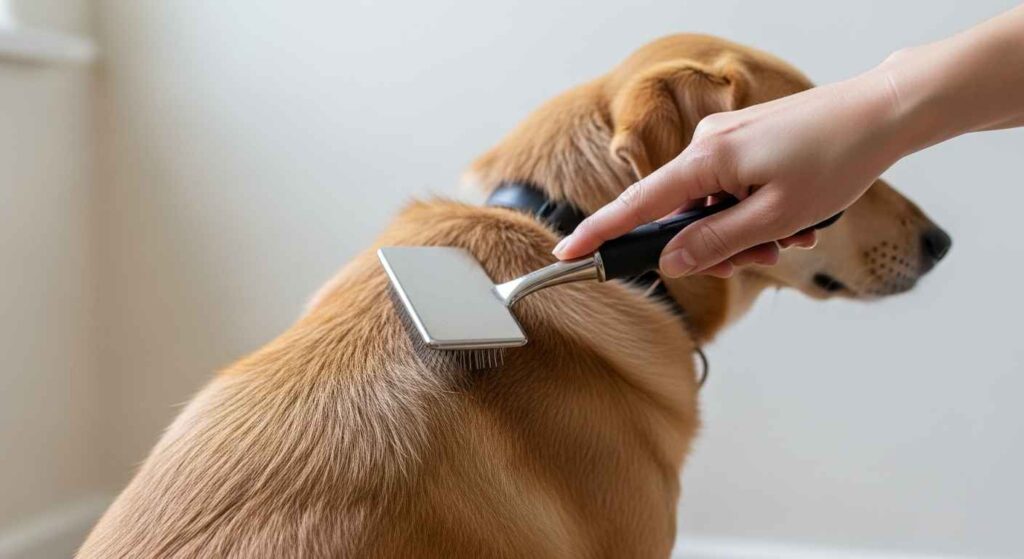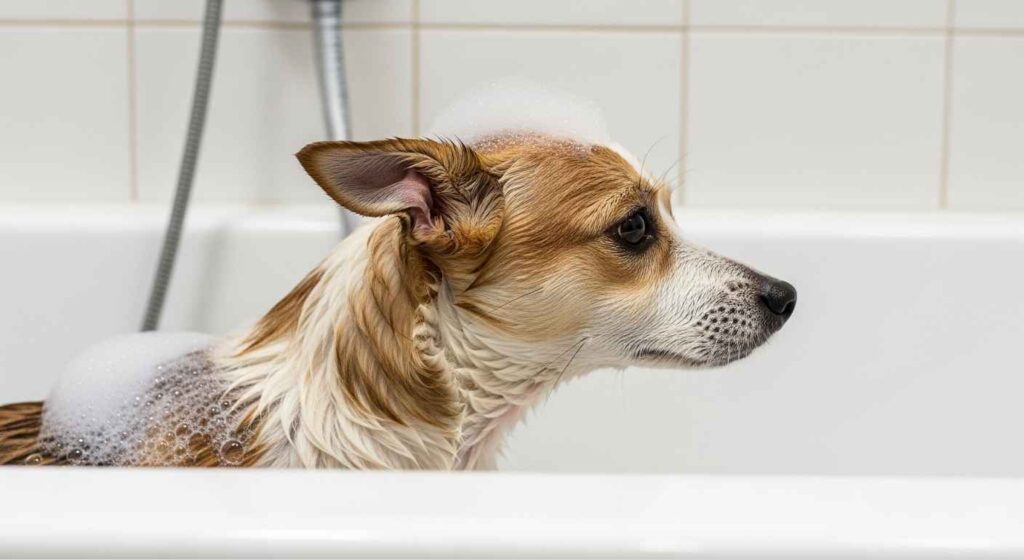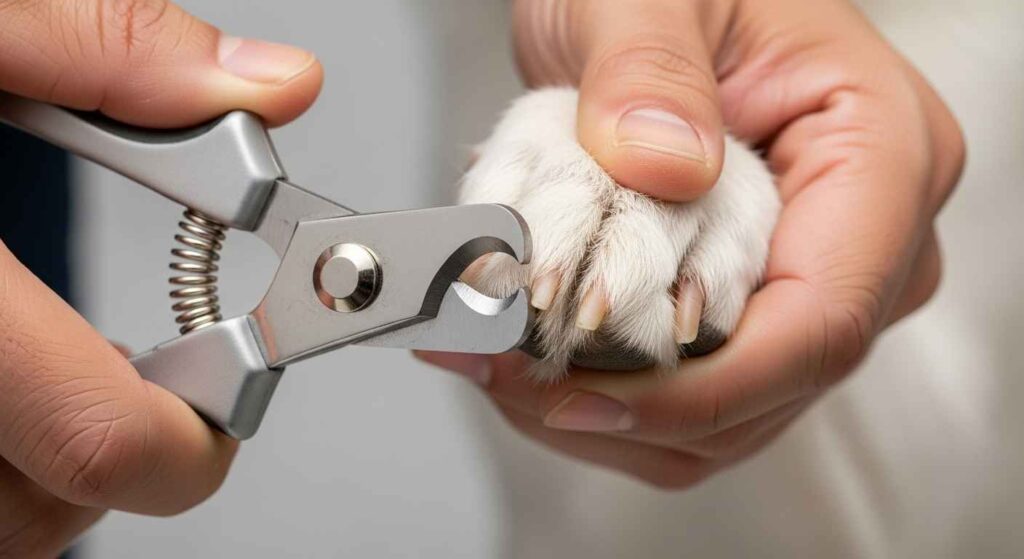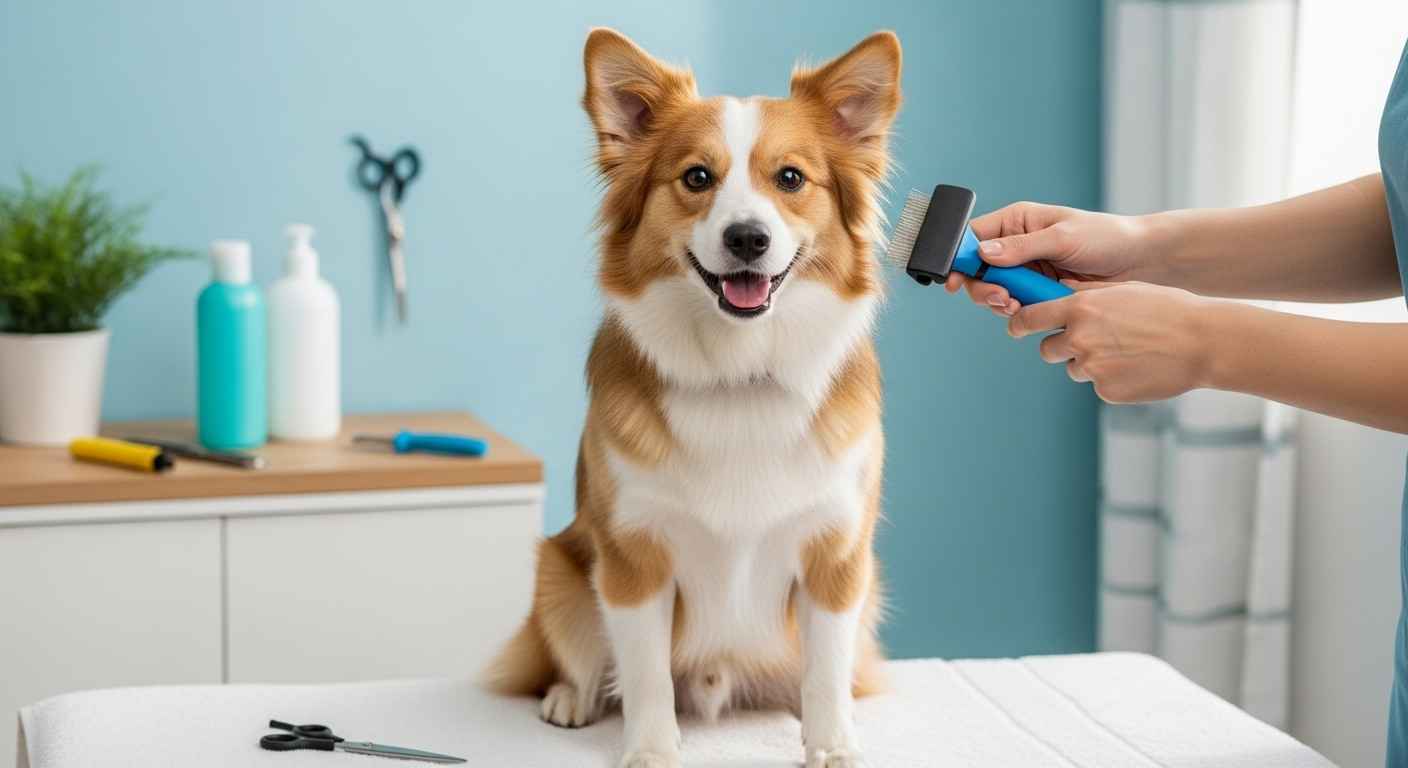Grooming your dog at home keeps them healthy and clean. This guide offers easy steps for all breeds. Start slowly if your dog is new to grooming. Regular care builds trust and spots issues early.
Why Groom Your Dog Regularly
Grooming removes dirt and dead hair. It keeps your dog comfortable. You can check for health problems like lumps or red spots. Use our pet symptom checker if you notice anything odd. Grooming also strengthens your bond and may reduce vet visits. Short sessions work best for beginners.
Tools You Need for Home Grooming
Get these tools before starting. Pick ones suited for your dog’s coat.
- Brush or comb (matches coat type).
- Dog shampoo and conditioner.
- Nail clippers or grinder.
- Cotton balls and ear cleaner.
- Dog toothbrush and toothpaste.
- Blunt scissors or clippers for trimming.
- Towels and a non-slip mat.
Quality tools last longer. Ask your vet for brand recommendations.
How Often to Groom Your Dog
Grooming frequency depends on breed and coat. Short-haired dogs need weekly brushing. Long-haired dogs need daily brushing. Bathe every one to three months. Trim nails every two weeks. Clean ears and teeth weekly. Puppies need gentle starts. Older dogs may need extra care. Use our pet age calculator to adjust grooming for your dog’s age.
Step-by-Step Grooming Process
Follow these steps in order. Take your time. Use treats to keep your dog calm.
Brushing the Coat
Brushing removes tangles and loose fur. It spreads natural oils for a shiny coat.
- Choose a quiet spot.
- Use a slicker brush for long coats or a rubber brush for short coats.
- Brush in the direction of hair growth.
- Check for mats behind ears and legs.
- Comb gently to remove mats.
Brushing reduces shedding in your home. For tips on pet hair cleanup, see our guide on how to get cat pee out of carpet for similar cleaning methods.

Bathing Your Dog
Bathe when your dog smells or gets dirty. Overbathing can dry their skin.
- Brush out mats before bathing.
- Fill a tub with warm water.
- Wet the body, avoiding the head.
- Apply dog shampoo from neck to tail.
- Rinse thoroughly to prevent itching.
- Towel dry or let air dry.
Use cotton balls to protect eyes and ears. If your dog got into food, check our pet food safety checker to ensure it’s safe.

Trimming Hair
Trimming prevents mats and keeps long hair neat. Not all dogs need it.
- Dry the coat after bathing.
- Use blunt scissors for safety.
- Trim around paws and belly.
- Cut small amounts at a time.
- Stop if your dog gets restless.
Long-haired breeds like poodles need more trims. Short-haired breeds like beagles need less. Find your dog’s needs with our pet breed finder quiz.
Clipping Nails
Short nails help your dog walk comfortably. Long nails cause pain.
- Hold the paw firmly.
- Clip only the nail tip.
- Avoid the quick (pink part inside).
- Use a grinder for smooth edges.
- Reward after each nail.
For dark nails, clip less to avoid bleeding. Stop bleeding with pressure. Avoid mistakes with our guide on common dog owner mistakes.

Cleaning Ears
Clean ears to prevent infections. Do this after baths.
- Dampen a cotton ball with ear cleaner.
- Wipe only the outer ear.
- Avoid going deep inside.
- Dry with a soft cloth.
- Check for bad smells or excess wax.
Floppy-eared dogs need frequent checks. Visit a vet if you notice issues.
Brushing Teeth
Brushing teeth prevents plaque buildup. Use dog-safe products.
- Lift the dog’s lip.
- Rub gums with your finger first.
- Add dog toothpaste to a brush.
- Scrub outer teeth surfaces.
- Offer a dental chew afterward.
Brush two to three times a week. Never use human toothpaste. For dental diet tips, see what fruits can dogs eat.
Checking Skin and Eyes
Check skin while grooming. Look for redness or bumps. Wipe eyes with a damp cloth to remove discharge. Use our pet symptom checker for eye or skin concerns.
Grooming for Different Coat Types
Adjust grooming to your dog’s coat type.
- Short coats: Brush weekly, bathe less often.
- Long coats: Brush daily, trim regularly.
- Curly coats: Use combs to prevent mats.
- Double coats: Deshed heavily in spring and fall.
Match grooming to your dog’s breed. If you have multiple pets, use our pet compatibility checker to manage care.
Common Grooming Problems and Solutions
- Dry skin: Use a dog-safe conditioner.
- Excess shedding: Brush more often.
- Mats: Cut them out carefully with scissors.
- Resistant dog: Start with short sessions and use treats.
For calming tips, read our guide on how to discipline a cat positive methods, which can apply to dogs. If your dog gets a cut, check what can I give my dog for pain.
People Also Ask: Common Questions Answered
- How do I groom a dog that hates it? Start with short sessions. Use treats and praise. Touch their paws or ears daily to build comfort.
- What’s the best shampoo for dogs? Use shampoos made for dogs. Oatmeal-based ones soothe skin. Ask your vet for breed-specific options.
- Can I use human clippers on my dog? No. Human clippers can overheat and harm skin. Use dog-specific clippers.
- How do I know if my dog needs grooming? Look for matted fur, bad smells, long nails, or dirty ears. Regular checks help.
When to See a Professional Groomer
Home grooming handles basic care. Professional groomers are best for complex cuts, matted fur, or anxious dogs. Vets can address skin or ear infections. For more tips, visit the ASPCA’s grooming guide (external link: https://www.aspca.org/pet-care/dog-care/dog-grooming-tips).
Final Tips for Success
Grooming keeps your dog healthy and happy. Start with the right tools. Follow a routine. Be patient. Check your dog’s health during each session. Regular care saves time and money. Your dog will feel great, and you’ll both enjoy the process.
This guide is current as of September 2025, based on the latest pet care practices. For more pet care advice, try our pet name generator for fun or check our other posts like can dogs eat broccoli for diet tips.
